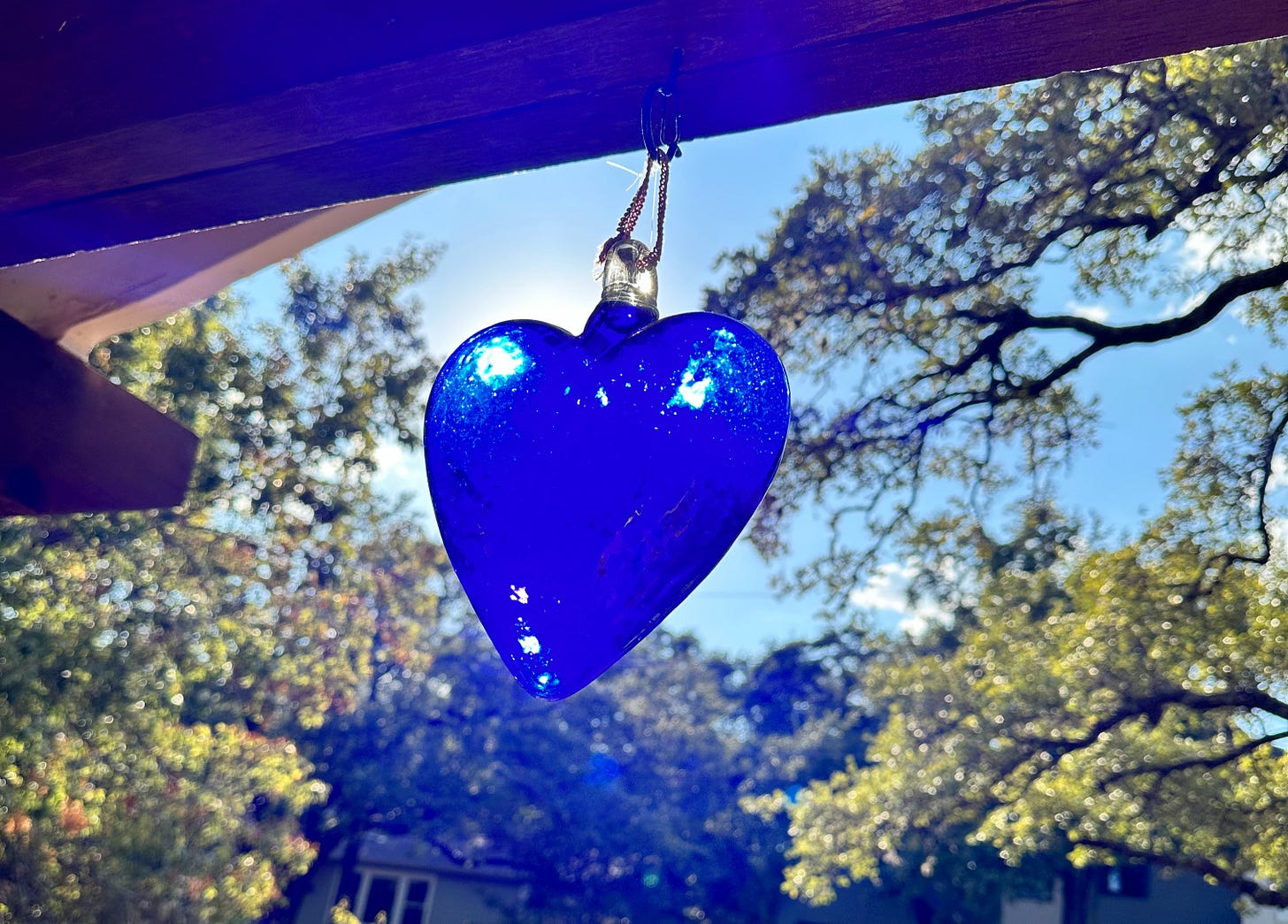Hard-earned life lesson: True self-compassion is a godsend
Learning how to treat myself with kindness changed my life. Here's how I got started.
Hi cacti — I turned my paid subscriptions back on, which some of you may notice if you were a paid subscriber in the past. I made the switch because I recently discovered the Substack algorithm penalizes writers who don’t offer paid subs (ugh!). So here we are … again. I will not be mad if you do not upgrade (or renew).
In May of 2021, after a series of heartbreaking events (what a fun year for everyone, no?), I desperately wanted to take a solo trip to my favorite beach, a place where the seashells are plentiful and the humans are scarce.
But the thought of doing so filled me with guilt. How dare you do something so selfish, my brain would respond. This back-and-forth between what I wanted and what I thought I deserved was gnawing at me. So I told my therapist.
She asked me a question I’ll never forget:
“You are so hard on yourself. Why do you think that is?”
Via the crappy Zoom screen, I gave her a blank stare, unable to answer or even really understand what that had to do with anything.
Shouldn’t I be hard on myself? Isn’t that how people get things done?
As I sobbed, she suggested two things: Buy the book Self-Compassion by Kristin Neff, PhD, and take the damn trip. Her words gave me the permission I needed to open my laptop and start planning, and I credit the trip with changing my life — for the better.
I took many walks, happy to do nothing but hunt for seashells, like the eerily beautiful shark’s eye moon snail and the paper-thin fig snail, shaped like the fruit it’s named after.
Since childhood, I have loved seashells, how each one was once home to a tiny gelatinous mollusk that constructed an ever-growing galactic spiral. It’s impressive. (I don’t know about you, but I’ve never single-handedly built a near-indestructible shelter of staggering beauty with my own body secretions.)
Along with enormous doses of nature therapy, I spent time on my trip absorbing the lessons in Self-Compassion, which wasn’t easy for me to do. Reading it was like admitting I needed help with a thing so basic as being nice to myself. I even hid the book cover at the airport and on the plane, in case someone noticed the title and whispered to themselves “warning: damaged goods.”
The book explains how and why people develop negative inner critics. It’s a little different for everyone—mine mostly stems from having a mother with mental illness and a father who grew up in a difficult household. But, we also culturally foster self-criticism in a number of ways beyond childhood dynamics, making it a challenge to unpack all the possible causes for self-cruelty.
For example, I frequently berated myself about my appearance, a common issue for women, surrounded as we are by makeup counters, Spanx and Instagram filters. It’s probably not shocking to learn my mother has always struggled with this, too. I don’t really know any woman who doesn’t, come to think of it?
To conquer your self-critic, the book nudges you toward active awareness (also known as mindfulness of your obnoxious mean version and shutting it down). One of the cornier-but-effective exercises is to write down one of the ways you are cruel to yourself, then counter that by writing from the point of view of a “caring friend.”
With practice, the goal is to make that caring friend your new mental roommate, kicking the self-critic out. And if the self-critic shows back up and plops down on the couch to raid your fridge and your fledgling sense of self-compassion, you simply state: “I am aware of your presence, but it’s time for you to go. I have a nicer roommate now.”
I was skeptical but it didn’t take long for it to start working. On my final evening of the trip, I waded in the warm Gulf water, drawn to the giant red sun and its watery mirror image appearing below it. A cascade of what sounded like wind chimes jingled near me. I could see through a wave crest that it was a large school of ribbonfish breaking the water’s surface. I listened and looked for a long time, letting vis medicatrix naturae do its job. Eventually, the sky shifted to a fiery orange and pink dusk while the sun dipped behind the horizon.
I trotted back to my beach chair, toweled off, and grabbed my notebook. I had never journaled much before, but on this trip I was unable to stop.
In the remarkable abundance of nature, my truth emerged. I wrote:
A piping plover scampering up toward my beach towel.
A pelican diving and catching fish from an enormous quivering bait ball.
Rows of sand underwater that look like sand dunes.
The bottlenose dolphins cornering fish against a wall, and the mom teaching the baby.
The white heron who blended in with the foam in the sand.
Shark’s eye moon snails and murex and banded tulips and learning about “kitten paw” seashells.
And lastly: “You see the beauty of the world but have a hard time seeing your own beauty as a human.”
Coming up in a future newsletter: The next steps I took after this life-changing trip.
Thank you for reading
The Shrieking Cactus newsletter is my labor of love for prickly people striving for resiliency. You can support my work by becoming a paid subscriber or “buying” me a coffee for a one-tip tip jar contribution.
Liking, sharing, or restacking helps get my post seen by more people, too.






Thank you, Joy! I need to hear this over and over again.
I ordered the book and I already have a beach trip planned in early December. I will reread your words then.